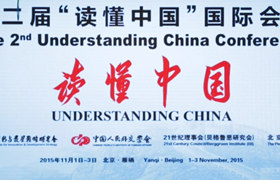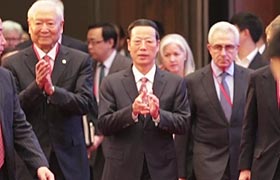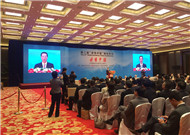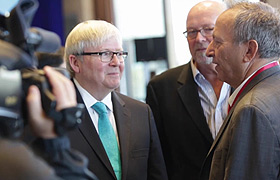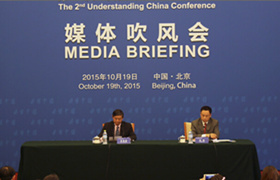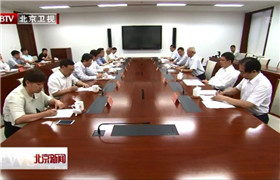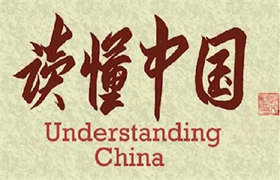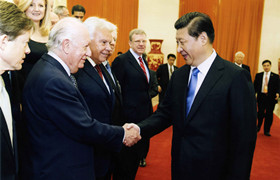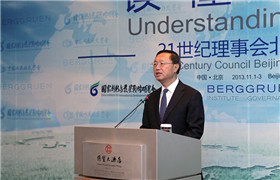- HOME--> Chairman
-
China’s Path of Peaceful Development and the Building of Communities of Interests
Keynote speech at the Fifth World Forum of China StudiesSource:
Zheng Bijian
Minister Wang Chen,
Mayor Yang Xiong,
Ladies and gentlemen,
Friends,
Good morning!
It is my great pleasure to meet you, both old and new friends at the World Forum of China Studies, which has now entered its fifth session. The discussions at the previous sessions have kindled a lot of intellectual ideas and broader consensus on the path of development that China should pursue. I may recall that seven years ago at the Second World Forum of China Studies, I made a speech entitled “Chinese Path, Chinese Dream and Chinese Heart”. In that speech I explained the concept and the path of China’s peaceful rise or peaceful development. My views and thoughts were well-received and echoed by many Chinese and international scholars. By focusing on the theme of this forum “China’s Way”, I’d like to share with you how I look at the prospect of China’s path of peaceful development in the second decade of the 21st century and how China can develop “convergence of interests” and build “communities of interests” with the rest of the world.
I. China’s is entering a new stage in its pursuit of peaceful development.
The 18th CPC congress held four months ago elected a new central leadership headed by General Secretary Xi Jinping and set up the goal of further deepening reform and opening up and attaining moderate prosperity throughout the country in all aspects by 2020.
Six days ago, the 12th National People’s Congress elected a new state leadership and a new administration, and formulated specific policy measures to comprehensively advance China’s economic, political, cultural, social and ecological progress. In his closing speech delivered to the NPC, President Xi made further elaborated on “Chinese Dream” and the historical destiny of China in contemporary times.
These two monumental events herald a new historical period of China’s reform, opening up and peaceful development.
Both the report of the 18th CPC Congress and the report on the work of the government delivered to the 12th National People’s Congress have announced in explicit terms that China will unswervingly stick to the path of the peaceful development, which is not only a major strategic choice of China but also her solemn declaration of foreign strategy to the rest of the world.
II. China’s path of peaceful development can stand the test of history
Through our hard work in the past three decades, China has charted a path of peaceful development that fits well the conditions of the country and keeps in line with the development of our times.
The 3rd plenary session of the 11th CPC Congress in 1978 was a turning point. The Chinese communists represented by Deng Xiaoping, through accurate analysis of the world situation, clearly discerned and seized the opportunity. They introduced the policy of reform and opening up to the outside world. In the course of reform and opening, a brand new development path has emerged, a path that guides us to independently achieve the great rejuvenation of the Chinese nation and build a prosperous, democratic, culturally advanced and harmonious socialist modern country by integrating into, rather than detaching from, economic globalization.
Thanks to our concerted efforts and determination to develop our country. The past thirty years and more have witnessed dynamism and vitality of the Chinese nation that was never seen before. People are encouraged to think out of box and unleash the productive forces. We have initiated theoretical, institutional, scientific and technological and cultural innovations in the light of our experience in the past three decades. All this has helped transform the country at a fast pace.
That is why China has been able to achieve an average annual GDP growth rate of almost 10% for 30 years in a row and to turn an underdeveloped country into a moderately prosperous one.
China’s growth is a great contribution to the development of the world. We have, through our actions, proved that we are a staunch force for world peace and have therefore gained status and weight in the international community that we deserve.
The sea change brought about by reform and opening up has not only transformed the whole country, but also given us a clear and profound understanding of our role in history and our direction to move forward which, as I see it, could be defined as “peaceful rise”.
As an observer and scholar, since I proposed the concept of “China’s peaceful rise” in 2002, I have always stressed that the word “peaceful” is directed against “China threat” argument and the word “rise” is directed against “China collapse” views, both spread by some international opinions.
In brief, China must and has to choose a development path of peaceful rise that no major countries in the modern history had ever chosen. I am sure this path will lead to success. And this points to the direction that China is taking today.
III. The content of China’s path of peaceful development will continue to expand.
To rise peacefully implies that we must handle properly our relationship with all countries and regions concerned. This is an intrinsic dimension of the peaceful rise concept. For that reason, since 2004, I have further proposed that in the process of peaceful rise, China must gradually enlarge “convergence of interests” and build “communities of interests” (“communities of common interests and stakes” as I called it at that time) in all dimensions with our neighbors and surrounding regions, as well as with all other countries and regions.
I stated my conviction in June 2005 that in the course of peaceful rise, China must and can form closely-knit “communities of interests” with various countries and regions in different fields and at different levels.
Then in the second decade of this century, I further developed this thinking in a number of
speeches in and outside China, including my speeches in Washington DC and at Stanford University during President Hu Jintao’s visit to the US in 2011 and my address to the 21st Century Council meeting in France later that year.
IV. Developing “convergence of interests” and building “communities of interests” are in line with the general trends of development of China in the second decade of the 21st century.
Here I’d like to bring your attention to a basic fact: the concepts of peaceful rise, of expanding “convergence of interests” and building “communities of interests” find their roots in the ideas and goals of China’s development in the second decade of 21st century.
In the next ten years, China’s development faces a number of serious challenges, such as resources and environment constraints on economic growth; unbalanced economic and social development including imbalances between investment and consumption, between foreign investments in China and Chinese investments abroad, between the city and the rural areas, and between the eastern and western regions; difficult industrial restructuring and insufficient R&D; human resources unable to meet the needs of employment structure; inequitable distribution of incomes and readjustment of interest structure; lagging social governance and increasing social tensions; and severe natural disasters, both predictable and unpredictable, etc.
To meet these challenges, our work in the second decade of the 21st century will undoubtedly focus on raising China’s productive forces to a higher level. It means that building on the progress of reform and development in the past thirty plus years, we must make greater strides in the development of productive forces in both quantitative and qualitative terms (especially qualitative terms). That is the center of everything we do and the very basis of all our effort to solve any problems. Therefore, we must, first of all, make remarkable progress in the development of science, technology and education. Second, we must rebalance the Chinese economy and transform our industrial structure (expanding domestic demand and domestic market). Third, we must make great effort to improve social governance aimed to make the Chinese society more dynamic, orderly, environmentally friendly and therefore more harmonious. Fourth, in terms of foreign relations, we must gradually enlarge “convergence of interests” and build “communities of interests” of different content and at various levels with our neighbors and surrounding regions, as well as with all relevant countries and regions. What is more, China will devote more efforts to domestic development and to raising ethic standards and inspiring people to work hard for the country. China will become a dynamic country enjoying harmony and stability. Thus China will achieve the goal of peaceful rise and cultural advancement.
Without any doubt, such a China will provide the rest of the world with a bigger market and greater opportunity for development.
All this will determine the direction of China’s relations with the rest of the world in the next decade and beyond.
V. Developing “convergence of interests” and building “communities of interests” are also in line with the general trends of development of the world in the second decade of the 21st century.
The vision of China’s peaceful rise and developing “convergence of interests” and “communities of interests” are also in line with the general trends of global development.
In my view, the second decade of the 21st century is a period of unprecedented opportunities and challenges for China and the world as a whole.
Here I would like to share with you my assessment which is divided into eight-points.
First, multi-polarity and economic globalization will further increase the interdependence among countries to the extent that no country can develop itself without working with other countries.
Second, as relations among major countries are being significantly realigned, we will see even more cooperation and competition. Each and every country seeks development through cooperation and tries to gain advantages through competition. It is therefore logical that we manage competition well and promote cooperation more.
Third, there is now greater momentum for the peaceful rise of large developing countries as a whole including China. The next ten years is a crucial period for their development and rise.
Fourth, the international financial crisis has led to a major change in the structure of productive forces on a global scale. A new technological and industrial revolution featuring “green, low carbon and sustainability” is gaining headway. In the post financial crisis era, global issues such as climate change, energy security, resources, food security and financial security are becoming more acute and the issue of global governance has moved up on the world agenda requiring urgent attention.
Fifth, economic development patterns of major countries will change significantly, and this will lead to further adjustment in positions of major countries and relationship of their interests.
Sixth, turbulence and geopolitical conflicts of various forms and the risks of war in traditional form still exist. We should neither panic over nor ignore them.
Seventh, notwithstanding the changes in the global landscape, the human society will remain in the long historical period in which international relationship is determined by sovereign states. Respecting sovereign rights and territorial integrity are still one of the indispensable basic principles of international relationship.
Eighth, looking around the world, we believe that there are both opportunities and challenges for China and the rest of the world, with the former outweighing the latter.
We have full confidence in continued peaceful development of China in the coming decade and will not be easily swayed by any emergencies. Given the fact that, in the first decade of the 21st century, China’s peaceful rise made it an important part of the world development, and a sound foundation of common interests was built between China and the world, then in the second decade, China will continue to follow this development path and thus become a more important part of the world development. Her common interests with the world will grow deeper and be better defined and more sustainable.
Having benefited from the development path of peaceful rise, there is no reason why China should depart from this path. To realize modernization, we must continue to follow and rely on the theory of peaceful rise.
VI. Develop “convergence of interests”, build “communities of interests” and follow the path of collective peaceful development of all countries.
The world is complex and many different factors are at play. In the final analysis, major countries have only three options before them. The first is to continue with the cold war thinking and to engage in various forms of cold war or “cool war”; the second is to engage in local hot wars as another world war is not possible; and the third option is to build communities of interests for common development. We know through our experience what the first two options would bring to the people. We are opposed to them but we are not terrified. As globalization deepens, countries around the world are facing common and completely new challenges. It would be dangerous and would come to no good end if any country responds to these global challenges in the first half of 21st century with old mindset and old strategies employed before 1970s and even in the 19th century. The Chinese are in favor of the third option, which is to pursue the development path of peaceful rise on the basis of solid domestic growth (including national defense) in the context of economic globalization and to enlarge convergence of interests and build communities of interests with all countries and regions.
I’d like to point out that expanding and deepening “convergence of interests” and building “communities of interests” is an all-directional strategic concept. In other words, it is by no means exclusive. It involves China and the United States, the EU, the rest of Asia especially our surrounding countries, Africa and Latin America, etc. In short, our goal is to integrate the interest of the Chinese people and the common interest of the rest of the world, expand convergence of interests with all stakeholders in all dimensions, build communities of interests with all relevant countries and regions in different fields, at different levels and with different content, and work towards the peaceful development of both China and the rest of the world. This of course includes the collective peaceful rise of developing countries including China.
In fact, converging interests between China and the rest of the world have already existed. For example, China working together with other countries, especially with the G20 members to meet the challenges of the international financial crisis since 2008 was the biggest converging point of interests under that particular circumstance. Right now China, the US, the EU and other major economies need to make adjustments and conduct domestic restructuring to adapt to a changes in the world after the international financial crisis. That should become a new area of converging interests.
In conclusion, I would like to emphasize that the idea of expanding “convergence of interests” and building “communities of interests” has become an important strategic guideline of the Chinese Communist Party and the Chinese government. The CPC and government leaders stressed this point on a number of international occasions. It has also been written into the CPC Central Committee’s Proposal on the 12th Five Year Plan and the white paper on China’s Path of Peaceful Development. Both the 18th CPC Congress and the 12th National People’s Congress have also stated this point clearly in different ways.
I believe that this will become an important approach for the second decade of the 21st century will give flesh to the concept of “China’s development path of peaceful rise”. It will gain more extensive consensus in the international community.
I’d appreciate any comments and discussions on the thinking that I’ve just shared with you and look forward to exchanging views with you in the future.
Thank you!
Shanghai, March 23, 2013
-
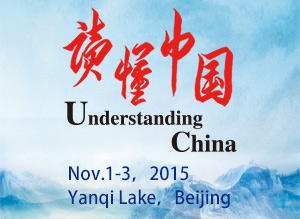
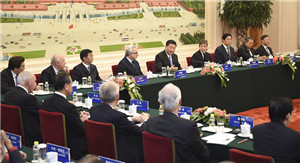
The 2nd "Understanding China" ConferenceOn November 1~3, 2015, the 2nd “Understanding China” Conference was held in Beijing Yanqi Lake International Conference Center. Zhang Gaoli, Vice Premier of the State Council, attended the opening ceremony.
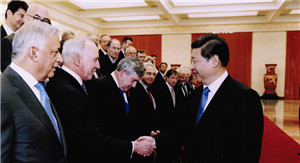
The 1st "Understanding China" ConferenceOn November 1~3, 2013, the 1st “Understanding China” Conference was held in Beijing, which was cosponsored by China Institute for Innovation & Development Strategy (CIIDS), Chinese People’s Institute of Foreign Affairs (CPIFA), and Berggruen Institute on Governance.
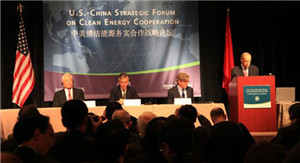
The 2nd U.S.-China Strategic Forum on Clean Energy CooperationWith the “Prospects for U.S.-China strategic cooperation in next decade” as its theme, the forum dwells on the implications of U.S.-China cooperation from the strategic perspective of coping with global challenges and maintaining world peace.
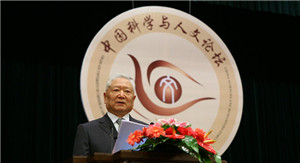
The China Sciences and Humanities ForumCo-initiated in April 2003 by renowned Chinese scientist Mr. Lu Yongxiang and influential political strategist Zhen Bijian, China Sciences and Humanities Forum was jointly hosted by Graduate University of Chinese Academy of Sciences (GUCAS) and the Higher Education Press.

